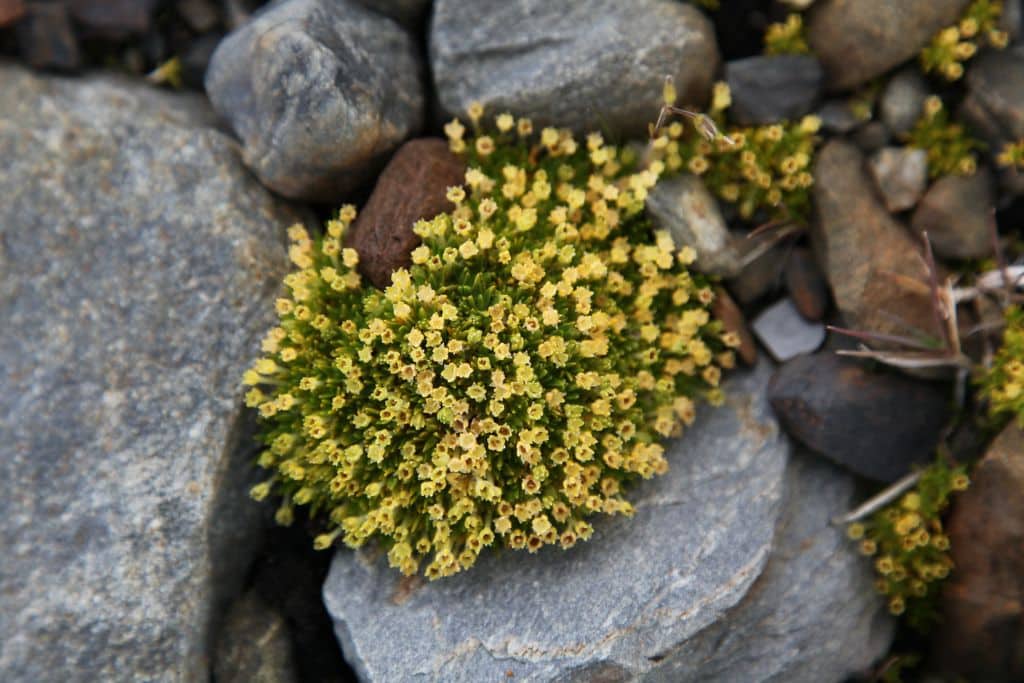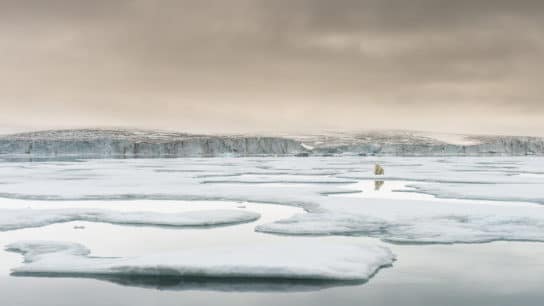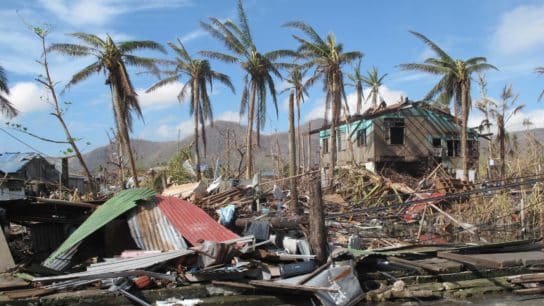The Antarctic Peninsula has increased more than tenfold over the last forty years, according to a new study that suggested that with further warming now virtually unavoidable, the greening trend is likely to continue.
—
The unprecedented melting of the Antarctic ice sheet, driven by global warming, is giving rise to widespread vegetation, new research has found.
Scientists at the universities of Exeter and Hertfordshire found that vegetation cover across the Antarctic Peninsula has increased more than tenfold over the last four decades, replacing ice. By analyzing satellite imagery, they found that vegetation cover went from less than one square kilometer in 1986 to almost 12 square kilometers by 2021.
The greening process in the Antarctic Peninsula, researchers found, accelerated by over 30% between 2016 and 2021 relative to the full study period (1986-2021), expanding by more than 400,000 square meters per year during this five-year period.
“The plants we find on the Antarctic Peninsula – mostly mosses – grow in perhaps the harshest conditions on Earth,” said Dr Thomas Roland from the University of Exeter. “The landscape is still almost entirely dominated by snow, ice and rock, with only a tiny fraction colonised by plant life. But that tiny fraction has grown dramatically – showing that even this vast and isolated ‘wilderness’ is being affected by anthropogenic climate change.”
In 2022, scientists warned that flowers are booming at an unprecedented rate in Antarctica. The two flowering plants in question, the Antarctic Pearlwort (Colobanthus quitensis) and the Antarctic Hair Grass (Deschampsia antarctica), native to Antarctica, are thriving like never before. Their growth rates have skyrocketed in recent years, with climate change being the primary driver behind this botanical revolution.
More about the topic: Antarctica’s Floral Awakening: How Climate Change is Transforming the Continent’s Ecosystem
Antarctica, the Earth’s coldest and most inhospitable continent, is warming much faster than the rest of the world. According to the UN’s World Meteorological Organisation (WMO), temperatures in Antarctica have increased by almost 3C over the past 50 years, with glaciers experiencing an accelerated retreat. Because the Antarctic ice sheet contains 58 metres (190 feet) of sea level rise equivalent over several centuries, scientists are growing worried about its recent behaviour.
Antarctica’s ice shelves are not just impressive geological formations; they also play a critical role in regulating the flow of glaciers into the sea. When these shelves diminish in size, glaciers release large quantities of freshwater into the ocean. This influx of freshwater disrupts the currents of the Southern Ocean, a phenomenon with far-reaching consequences.

A study published last year found that more than 40% of Antarctica’s ice shelves have been steadily shrinking since 1997, with almost half of them showing no sign of recovery. The culprit behind this dramatic change? Warm water on the western side of Antarctica, which has been relentlessly eroding the ice shelves.
And with an additional heating of at least 0.4C now virtually unavoidable, a paper published in August 2023 concluded that the continent will experience more pronounced extreme weather events in the years to come.

According to Dr Olly Bartlett from the University of Hertfordshire, one of the scientists behind the new study, the greening trend is likely to continue.
“As these ecosystems become more established – and the climate continues to warm – it’s likely that the extent of greening will increase,” Bartlett said. “Soil in Antarctica is mostly poor or non-existent, but this increase in plant life will add organic matter, and facilitate soil formation – potentially paving the way for other plants to grow. This raises the risk of non-native and invasive species arriving, possibly carried by eco-tourists, scientists or other visitors to the continent.”
Featured image: Wikimedia Commons.
This story is funded by readers like you
Our non-profit newsroom provides climate coverage free of charge and advertising. Your one-off or monthly donations play a crucial role in supporting our operations, expanding our reach, and maintaining our editorial independence.
About EO | Mission Statement | Impact & Reach | Write for us














